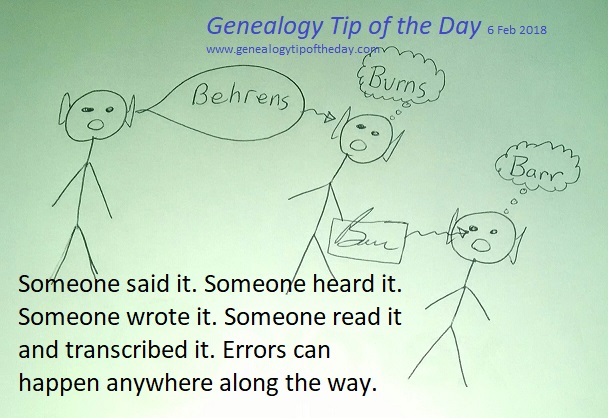There are several steps a piece of information takes to go from your ancestor’s mouth to the record or index entry at which you are looking. Intentional errors, misinterpretations, and honest mistakes can work independently or together to make what looks like a “wrong” name. Keep this process is mind: It is what turns a Butler into a Putter. 
Check out Michael’s genealogy webinars–download immediate.







5 Responses
Thank u, must keep that in mind at all times.
This can also happen when a robot translates a phone message. I got a call about a Dr. Motor. I didn’t know who this was. When I listened to the actual message, it was Dr. Winter. How did they hear Motor?
I have also been trying to figure out a 1920 Census Record that is very confusing. I’m wondering if a neighbor gave the information. Names and ages for a couple of names are way off .
Errors can happen to anyone.
This illustration made me LOL!! Thank you!
It’s sometimes amazing to follow closed captioning when the transcriber
has no or little knowledge of the era. In England, lots of syllables are lost
when moving from the standard written language to the spoken language.
Worchester sounds like Wooster, Leicester is correctly pronounced Lester, &
Brougham sounds correctly as Broom. My rule has always been, “it’s their
language; they can say it any way they want to.” Just like there are “cheat
sheets for “born, married, & died” in multiple languages for those we don’t
know, cheat sheets for what we may consider “incorrect” pronunciations
would be handy. Maybe there are; I don’t remember seeing any.
A cheat sheet for pronunciations would be really handy.